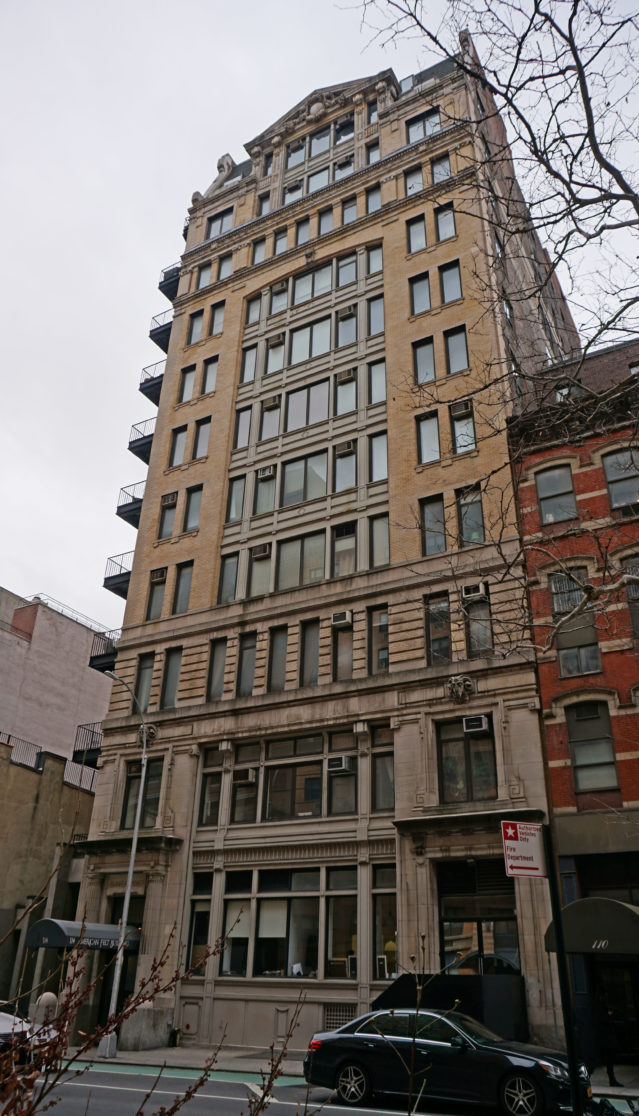Description & Building Alterations
Architects Knight & Collins designed this eleven-story building in 1906 for the American Felt Company, which was founded in Newburgh, New York in 1899 and manufactured felt for a variety of products including hats, piano strikers, and pool tables. As early as 1903, the American Felt Company also occupied the neighboring 110 East 13th Street, where they would remain even after constructing the present building at No. 114-118. There were a number of piano manufacturers in this area towards the end of the 19th century and into the 20th century.
The American Felt Company was the primary producer of the felt used for the world-famous Steinway Piano Company, located on the north side of 14th Street. It also owned the first woven felt manufacturer, the Glenville Manufacturing Company in Greenwich, CT, which became the largest following its purchase by the American Felt Company. This building features two bighorn sheep heads, paying homage to the animals who provided the raw material for felt production.
The building later housed several printers and bookbinders, industries which became prominent in the area in the early-to-mid-20th century, and which were so important to New York’s rise as a commercial and cultural capital. In 1918, Marchbank’s Press, owned by Hal Marchbanks, was located here. According to The Inland Printer, published in October 1923, the building also housed the Hoffmann Type & Engraving Company. 114-118 East 13th Street was converted to condominiums in 1984, at which time the balconies were added to the building’s exposed east wall, preserving the integrity of the façade on Thirteenth Street.
Several celebrities have lived here, including actor Tom Cruise. Abbie Hoffman, a political activist, 1960s counterculture icon, founder of the Youth International Party (“Yippies”), and part of the “Chicago 7,” lived in a rooftop apartment in this building. Author Bret Easton Ellis wrote the 1991 bestseller American Psycho while living in his apartment here.
The building is broken into three vertical compartments. In the central compartment, there are strings of six windows encased in a blue-hued stone set apart from the surrounding brown brick. Sets of two windows flank this section on both sides. There is little applied ornamentation and window cases are minimal.
The building constructed on this lot prior to this one housed William Van Tassell & Kearney, auctioneers for horse carriages (their horse auction mart, located down the block at No. 128, was designated a New York City Landmark in 2012). It was also the location of Clarendon Hall, a meeting place for labor organizations where Samuel Gompers, President of the American Federation of Labor, addressed workingmen in efforts to fight for their rights.
This was previously Lot 14, and then Lot 1001-1042.
More +Close -


Do you know this building? Please share your own stories or photos of this building here!